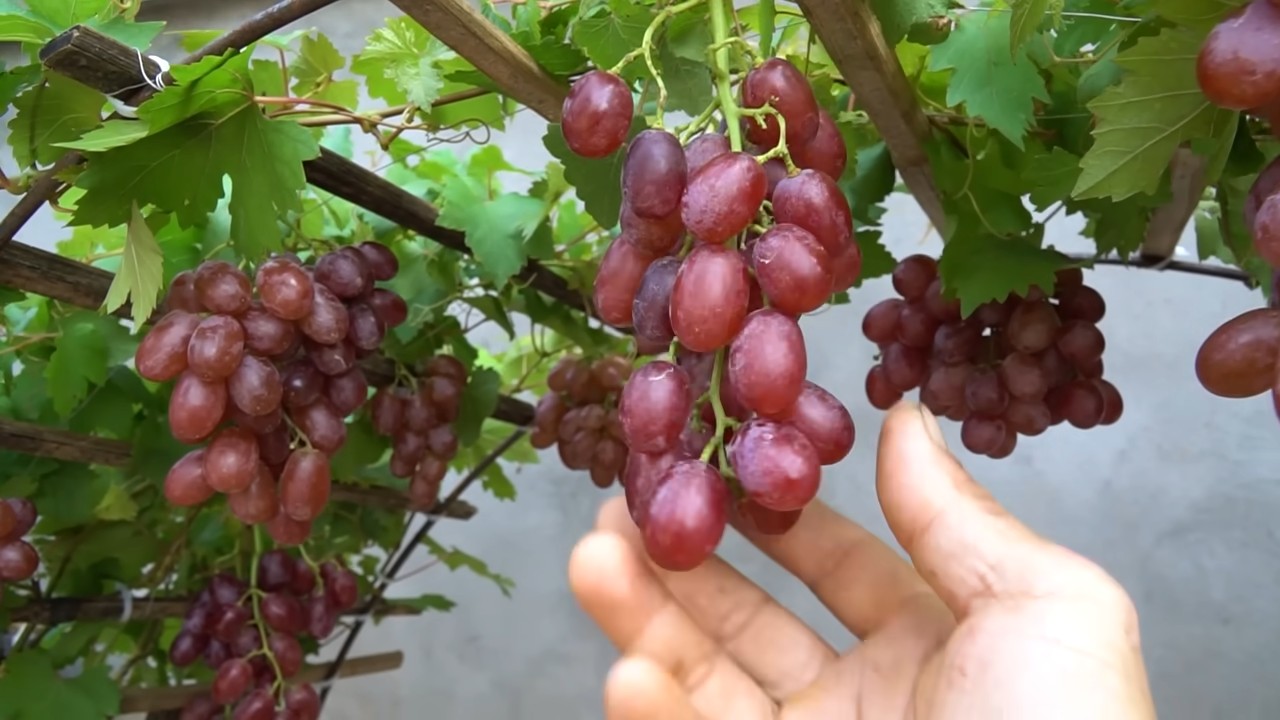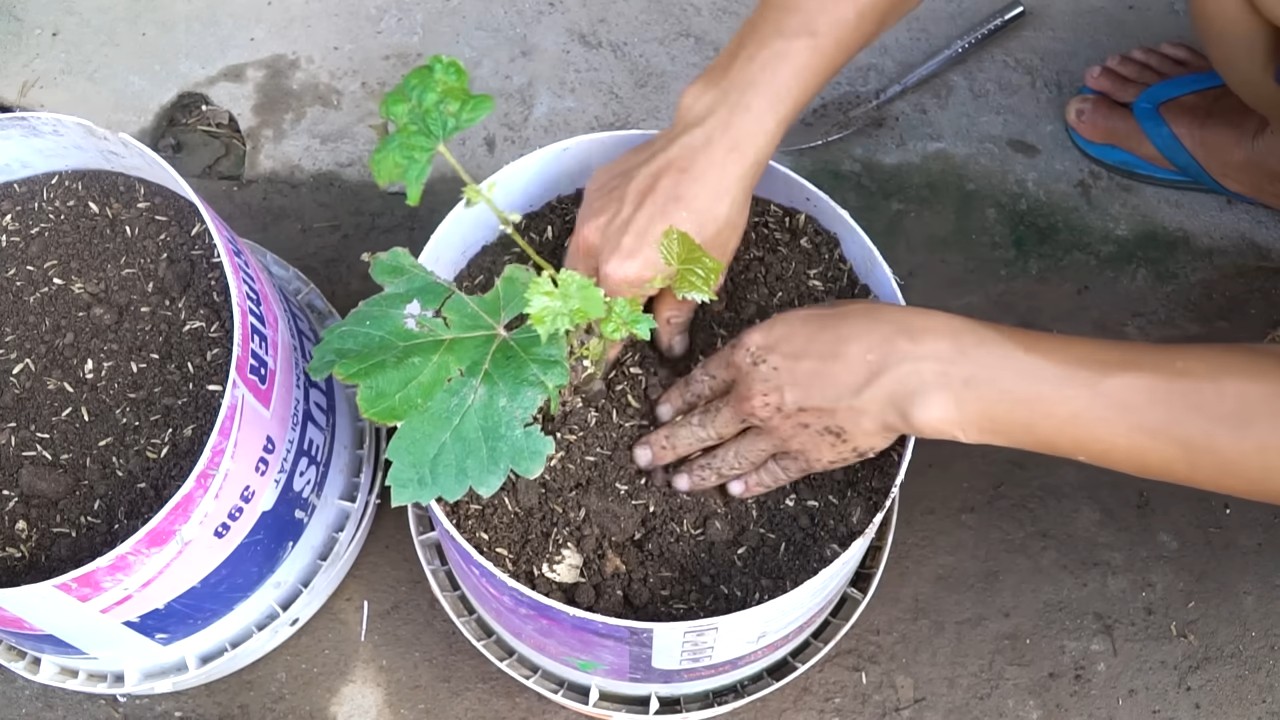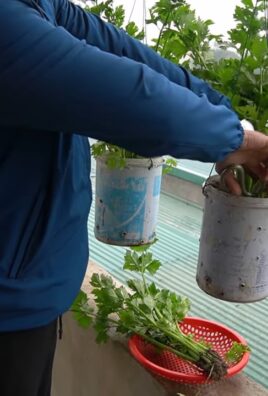Grow grapes year round? Sounds like a dream, right? Well, grab your gardening gloves because we’re about to turn that dream into a delicious reality! For centuries, grapes have been a symbol of abundance, celebration, and even a little bit of magic. From ancient Roman vineyards to sun-drenched Californian estates, the allure of cultivating your own grapes has captivated gardeners for generations.
But what if you don’t have a sprawling vineyard or a perfectly temperate climate? That’s where these ingenious DIY tricks come in! I’m going to share some simple, yet effective, methods to extend your grape-growing season and potentially grow grapes year round, regardless of your location. Imagine plucking fresh, juicy grapes from your own vine, even in the dead of winter!
This article is packed with practical tips and hacks that will empower you to take control of your grape-growing destiny. Whether you’re a seasoned gardener or just starting out, you’ll find valuable information to help you succeed. So, let’s dive in and unlock the secrets to a year-round grape harvest!

Growing Grapes Year-Round: Your DIY Guide for Indoor Cultivation
Hey everyone! Have you ever wished you could enjoy fresh, juicy grapes all year round, whether there’s snow outside or the sun is shining? Me too! And that’s why I set out to find a way to grow grapes indoors. It might seem a bit intimidating at first, but with the right preparation and a little patience, it’s absolutely doable. In this article, I’ll show you step-by-step how you can create your own little grape paradise in your home. Let’s get started!
What You Need: The Preparation
Before we begin, we’ll obviously need the right equipment. Here is a list of things you should get:
- Grapevines: Choose a variety that is suitable for growing in pots. Dwarf or miniature grape varieties are a good choice. Make sure the vine looks healthy and shows no signs of disease.
- A Large Pot: The pot should have a capacity of at least 30 liters (about 8 gallons) to give the roots enough space to grow.
- High-Quality Potting Soil: Well-draining potting soil is crucial. You can also use a special soil mix for grapevines.
- A Trellis or Support: Grapevines need something to climb on. A trellis made of wood, metal, or plastic is ideal.
- A Grow Light: Since we are growing the grapes indoors, we need a grow light to give them sufficient light. LED lights are energy-efficient and emit little heat.
- Fertilizer: A special fertilizer for grapevines will provide the plants with the necessary nutrients.
- A Spray Bottle: For misting the leaves.
- Pruning Shears: For pruning the vines.
- Patience: Grapes need time to grow and ripen.
Step-by-Step Guide: Your Indoor Grape Project
Now that we have everything, we can start growing. Follow these steps to grow your own grapes indoors:
- Prepare the Vine: If you bought a bare-root vine, soak the roots in water for a few hours before planting. This helps them to rehydrate. If the vine is already in a pot, you can skip this step.
- Prepare the Pot: Fill the pot with the potting soil. Make sure the soil is loose and airy. Leave about 5 cm (2 inches) of space at the top, to the rim of the pot.
- Plant the Vine: Dig a hole in the soil large enough to accommodate the vine’s roots. Place the vine in the hole and cover the roots with soil. Press the soil down lightly.
- Water Thoroughly: Water the vine thoroughly until water runs out of the pot’s drainage holes.
- Install the Trellis: Place the trellis in the pot, right next to the vine. Make sure it is stable.
- Tie the Vine: Gently tie the vine to the trellis. Use a soft material to avoid damaging the vine.
- Choose the Location: Place the pot in a bright spot, ideally near a window. If you don’t have a sufficiently bright spot, use a grow light.
- Install the Grow Light: Hang the grow light above the vine. The distance between the lamp and the plant should be about 30-50 cm (12-20 inches). Turn the light on for 12-16 hours per day.
- Watering: Water the vine regularly, but avoid waterlogging. The soil should always be slightly moist. Check the soil’s moisture by sticking your finger about 2 cm (1 inch) deep into the soil. If the soil feels dry, it’s time to water.
- Fertilizing: Fertilize the vine every two weeks with a special fertilizer for grapevines. Follow the instructions on the packaging.
- Pruning: Pruning is important to control the shape of the vine and encourage fruit production. Prune the vine in winter when it is dormant. Remove all dead or damaged shoots. Shorten the remaining shoots to about 2-3 buds.
- Pollinating: Since we are growing the grapes indoors, we need to pollinate them ourselves. Use a small brush to transfer pollen from one flower to another. You can also gently shake the flowers to encourage pollination.
- Be Patient: Grapes need time to grow and ripen. It can take several months before you can harvest the first fruits. Be patient and take good care of your vine.
The Right Lighting: The Be-All and End-All for Indoor Grapes
Lighting is a crucial factor for the success of your indoor grape project. Grapes need a lot of light to grow and produce fruit. Here are some lighting tips:
- Grow Lights: LED grow lights are the best choice for indoor growing. They are energy-efficient, emit little heat, and have a long lifespan. Make sure the lamp has the right light spectrum for plant growth.
- Light Duration: Grapes need 12-16 hours of light per day. Set a timer to automatically turn the lamp on and off.
- Distance to the Plant: The distance between the lamp and the plant should be about 30-50 cm (12-20 inches). If the plant’s leaves are getting scorched, the lamp is too close.
- Natural Light: If possible, place the vine near a window to get additional natural light.
Pests and Diseases: How to Protect Your Grapes
Even indoors, grapes can be affected by pests and diseases. Here are some common problems and how you can combat them:
- Spider Mites: Spider mites are small, spider-like pests that feed on the plant’s leaves. You can recognize them by fine webs on the leaves. Combat spider mites with an insecticide or a solution of water and dish soap.
- Aphids: Aphids are small, green or black insects that also feed on the plant’s leaves. Combat aphids with an insecticide or a solution of water and dish soap.
- Powdery Mildew: Powdery mildew is a fungal disease that appears as a white, flour-like coating on the leaves. Combat powdery mildew with a fungicide.
- Downy Mildew: Downy mildew is another fungal disease that appears as yellowish spots on the leaves. Combat downy mildew with a fungicide.
Important: Check your grapes regularly for pests and diseases. The earlier you identify a problem, the easier it is to fix.
The Harvest: The Reward for Your Effort
After all the work and patience, it’s finally time for the harvest! The grapes are ripe when they have reached their full color and can be easily detached from the stem. Try a grape to make sure it’s sweet and juicy.
Cut the grapes with pruning shears. Enjoy your homegrown grapes fresh or use them for jam, juice, or wine.
Congratulations! You have successfully grown grapes indoors. With a little care and attention, you can enjoy fresh, juicy grapes all year round.

Conclusion
So, there you have it! Growing grapes year-round might seem like a feat reserved for seasoned horticulturalists, but with this simple DIY trick, you can extend your grape-growing season and enjoy fresh, homegrown grapes even when the weather outside is frightful. This method isn’t just about defying the seasons; it’s about taking control of your food source, reducing your reliance on commercially grown produce, and experiencing the unparalleled satisfaction of nurturing your own vines.
Why is this a must-try? Because it offers a tangible solution to a common problem: the limited grape-growing season. Imagine the joy of harvesting sweet, juicy grapes in the dead of winter, a burst of summer flavor amidst the cold. This DIY approach is also incredibly cost-effective. Instead of investing in expensive greenhouses or specialized equipment, you can utilize readily available materials and a bit of ingenuity to create a microclimate that fosters grape growth.
But the benefits extend beyond just fresh grapes. This method encourages sustainable practices. By growing your own grapes, you reduce your carbon footprint associated with transportation and storage of commercially grown produce. You also have complete control over the growing process, ensuring that your grapes are free from harmful pesticides and chemicals.
Ready to take your grape-growing game to the next level?
Don’t be afraid to experiment with different grape varieties. Some grapes are naturally more cold-hardy than others, making them ideal candidates for year-round growing. Consider varieties like ‘Reliance’ or ‘Marquette,’ known for their resilience and ability to withstand colder temperatures. You can also adjust the lighting and temperature within your enclosure to optimize growth. LED grow lights can provide supplemental light during the darker months, while a small space heater can help maintain a consistent temperature.
Another variation to consider is hydroponic grape growing. While this requires a slightly more advanced setup, it allows you to grow grapes without soil, providing precise control over nutrient delivery and water management. This can be particularly beneficial in areas with poor soil quality or limited space.
We encourage you to embrace this DIY trick and embark on your year-round grape-growing adventure. The rewards are well worth the effort. Not only will you enjoy a continuous supply of fresh grapes, but you’ll also gain a deeper appreciation for the natural world and the power of sustainable gardening.
Share Your Experience!
We’d love to hear about your successes and challenges. Post pictures of your grape vines, share your tips and tricks, and let us know what varieties you’re growing. Together, we can create a community of year-round grape growers and inspire others to embrace this rewarding endeavor. Let’s make growing grapes year-round a reality for everyone!
Frequently Asked Questions (FAQ)
What type of grapes are best for year-round growing?
While many grape varieties can be grown year-round with the right techniques, some are naturally more suited to the task. Cold-hardy varieties like ‘Reliance,’ ‘Marquette,’ ‘Somerset Seedless,’ and ‘Valiant’ are excellent choices, as they can tolerate lower temperatures and shorter daylight hours. These varieties are also known for their disease resistance, making them easier to manage in a controlled environment. Consider your local climate and the specific conditions within your enclosure when selecting your grape variety. Experimenting with different varieties can also help you determine which ones thrive best in your setup.
How do I control the temperature and humidity inside the enclosure?
Maintaining optimal temperature and humidity levels is crucial for successful year-round grape growing. A small space heater with a thermostat can help regulate the temperature, especially during colder months. Aim for a temperature range of 65-75°F (18-24°C) during the day and slightly cooler temperatures at night. Humidity can be controlled using a humidifier or dehumidifier, depending on your local climate. Grapes generally prefer a humidity level of around 50-60%. Regularly monitor the temperature and humidity levels using a thermometer and hygrometer, and adjust your equipment accordingly. Good ventilation is also essential to prevent the buildup of moisture and the development of fungal diseases.
What kind of lighting is needed for year-round grape growing?
During the shorter days of winter, supplemental lighting is necessary to provide the grapes with sufficient energy for growth and fruit production. LED grow lights are an excellent choice, as they are energy-efficient and provide a full spectrum of light that mimics natural sunlight. The specific wattage and type of LED grow light will depend on the size of your enclosure and the number of grape vines you are growing. Aim for at least 12-16 hours of light per day during the winter months. Adjust the height of the lights as the vines grow to ensure that they receive adequate light exposure.
How often should I water and fertilize my grape vines?
Watering and fertilization requirements will vary depending on the grape variety, the growing medium, and the environmental conditions. Generally, grape vines should be watered deeply but infrequently, allowing the soil to dry out slightly between waterings. Overwatering can lead to root rot and other problems. Fertilize your grape vines regularly with a balanced fertilizer that is specifically formulated for fruit-bearing plants. Follow the instructions on the fertilizer label carefully, and avoid over-fertilizing, as this can damage the vines. Monitor the leaves for signs of nutrient deficiencies, such as yellowing or browning, and adjust your fertilization schedule accordingly.
How do I prune my grape vines for year-round production?
Pruning is essential for maintaining the health and productivity of your grape vines. Prune your vines regularly to remove dead, damaged, or diseased wood, and to shape the vines for optimal light exposure and air circulation. The specific pruning techniques will depend on the grape variety and the training system you are using. Generally, grapes are pruned during the dormant season (late winter or early spring) to encourage new growth and fruit production. Research the specific pruning requirements for your grape variety and follow a consistent pruning schedule.
What are some common pests and diseases that affect grape vines, and how can I prevent them?
Grape vines are susceptible to a variety of pests and diseases, including aphids, spider mites, powdery mildew, and black rot. To prevent these problems, maintain good hygiene in your growing area, remove any dead or decaying plant material, and provide good ventilation. Regularly inspect your vines for signs of pests or diseases, and take action promptly if you notice any problems. Organic pest control methods, such as insecticidal soap or neem oil, can be effective for controlling aphids and spider mites. Fungicides can be used to prevent or treat fungal diseases like powdery mildew and black rot. Choose disease-resistant grape varieties to minimize the risk of disease problems.
Can I grow grapes indoors without any natural light?
While it’s possible to grow grapes indoors without any natural light using artificial lighting, it’s generally more challenging and requires a more sophisticated setup. Natural light is always preferable, as it provides a broader spectrum of light and is more energy-efficient. If you are growing grapes indoors without any natural light, you will need to invest in high-quality LED grow lights that provide a full spectrum of light. You will also need to carefully monitor the temperature, humidity, and ventilation to create an optimal growing environment.
How long does it take to grow grapes from seed?
Growing grapes from seed is a lengthy process that can take several years to produce fruit. It’s generally recommended to propagate grapes from cuttings or by grafting, as these methods are faster and more reliable. If you choose to grow grapes from seed, be prepared for a long wait and the possibility that the resulting plant may not be true to type (i.e., it may not produce grapes that are identical to the parent plant).
Is it possible to grow grapes in containers?
Yes, it is possible to grow grapes in containers, which is a great option for those with limited space. Choose a large container (at least 15-20 gallons) with good drainage. Use a well-draining potting mix that is specifically formulated for fruit-bearing plants. Provide a trellis or other support structure for the vines to climb on. Water and fertilize your container-grown grapes regularly, and prune them as needed to maintain their shape and productivity. Container-grown grapes may require more frequent watering and fertilization than grapes grown in the ground.




Leave a Comment